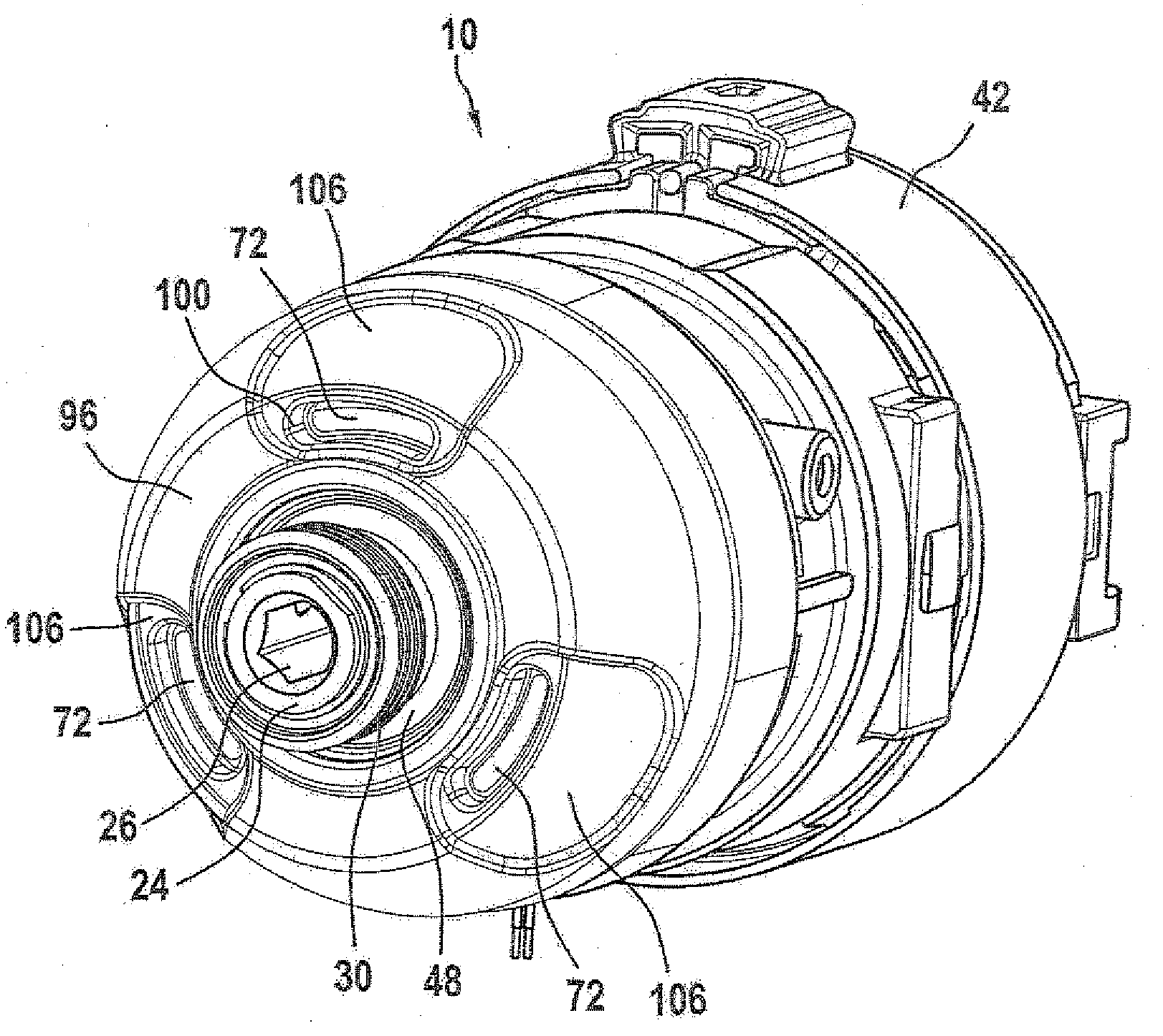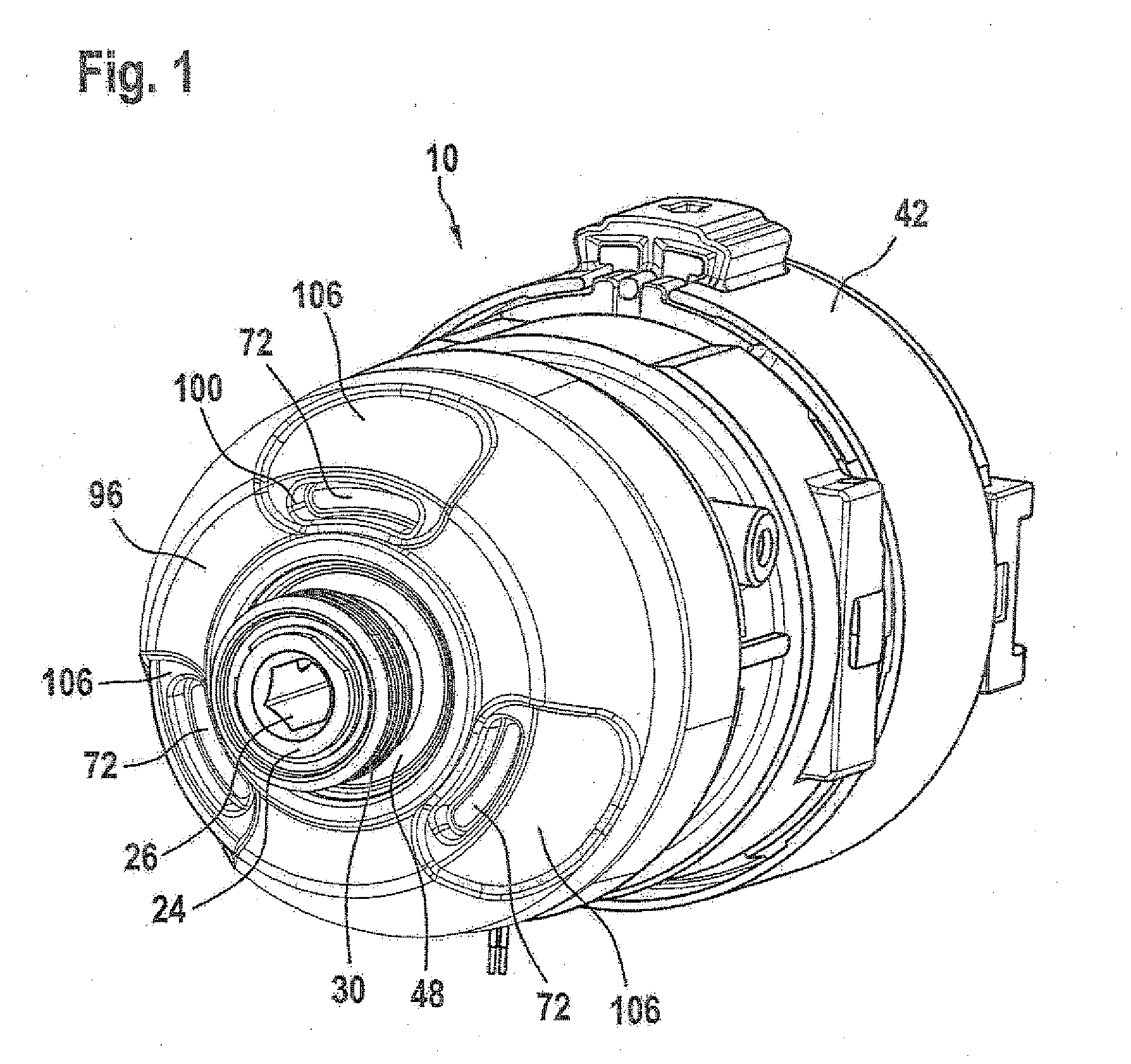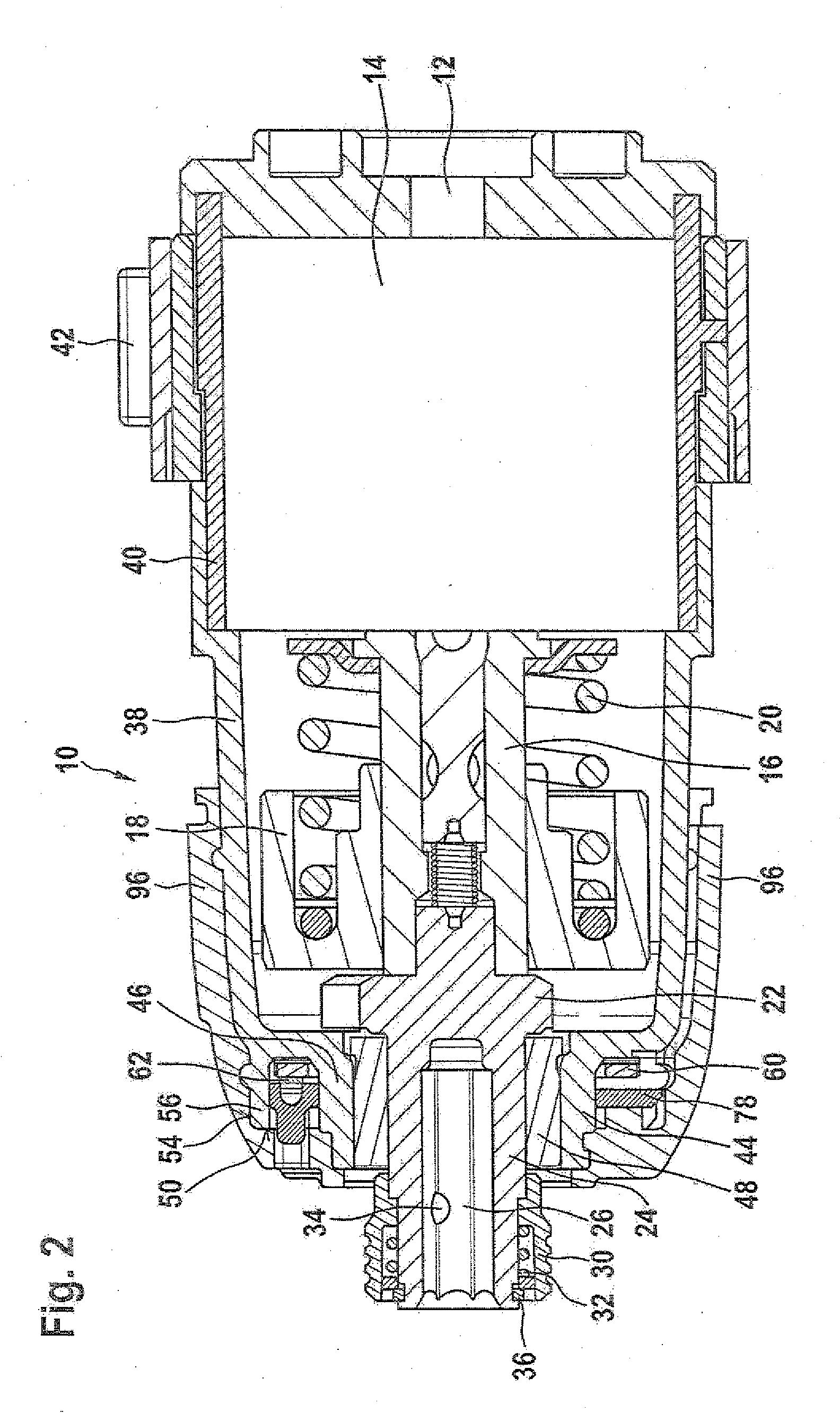Hand-held power tool
a power tool and hand-held technology, applied in the direction of luminescence, instruments, light support devices, etc., can solve the problems of workpieces subjected to dirt or debris damage, workpieces are the nose of a tool is more likely to be involved in collisions with other objects, so as to reduce the impact of vibration generated by the tool insert and the overall uniformity of the overall illumination pattern
- Summary
- Abstract
- Description
- Claims
- Application Information
AI Technical Summary
Benefits of technology
Problems solved by technology
Method used
Image
Examples
Embodiment Construction
[0028]Just the nose portion 10 of a hand-held power tool of the sort used for drilling and / or driving is shown in FIGS. 1 and 2. Since these tools are commonplace, aspects of these tools not relevant to the invention, such as a handle, motor and motor housing are not illustrated. The tool may be provided either with a power cord for drawing AC power or may incorporate an intrinsic or removable rechargeable DC battery.
[0029]Torque from the motor is transmitted via a pinion gear 12 through a gear transmission 14 to rotate an intermediate shaft 16. Since the illustrated tool is an impact driver, it is provided with a conventional impact mechanism assembly comprising among other things a striker 18, a spring 20 and an anvil 22 for providing high torque impacts. Anvil 22 is integral with an output shaft 24 which is provided with a cavity 26 for receiving a tool insert. Output shaft 24 rotates around a tool axis of rotation 28 (FIG. 4) and is provided with a sleeve 30, a spring 32, a lock...
PUM
 Login to View More
Login to View More Abstract
Description
Claims
Application Information
 Login to View More
Login to View More - R&D
- Intellectual Property
- Life Sciences
- Materials
- Tech Scout
- Unparalleled Data Quality
- Higher Quality Content
- 60% Fewer Hallucinations
Browse by: Latest US Patents, China's latest patents, Technical Efficacy Thesaurus, Application Domain, Technology Topic, Popular Technical Reports.
© 2025 PatSnap. All rights reserved.Legal|Privacy policy|Modern Slavery Act Transparency Statement|Sitemap|About US| Contact US: help@patsnap.com



